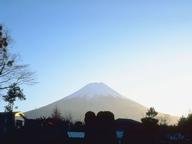Quiz Answer Key and Fun Facts
1. Which of these words is NOT commonly used to describe the stages of a volcano cycle?
2. What name is given to the fragmental material produced by a volcanic eruption?
3. Of all the types of volcanic eruption, Peléan eruptions are probably the most feared. What makes them so dangerous?
4. Known for their violence, Plinian eruptions are named after a person who was killed in the deadly eruption of which notorious volcano?
5. Which of these volcanic eruptions, named after an island off the coast of Iceland, involves interaction between water and lava?
6. Phreatic eruptions are generally weaker than magmatic eruptions, but can be dangerous because of their unpredictability. What is the main product of these explosive eruptions?
7. One of the most destructive hazards associated with volcanic activity is the fast-moving mudflows known by what name?
8. On various occasions throughout history the phenomenon known as volcanic winter has caused more devastation than the eruptions themselves. What is probably the most serious consequence of volcanic winter?
9. The Volcanic Explosivity Index, or VEI, measures the explosivity of a volcanic eruption in relative terms. Volcanoes that had an eruption with a VEI of 8 are also known as supervolcanoes. Which of these erupted in much more recent times than the others, and is NOT classified as a supervolcano?
10. Igneous rocks are formed by the solidification of lava. Which of these igneous rocks was widely used by Mesoamerican civilizations to make tools and weapons?
Source: Author
LadyNym
This quiz was reviewed by FunTrivia editor
rossian before going online.
Any errors found in FunTrivia content are routinely corrected through our feedback system.
